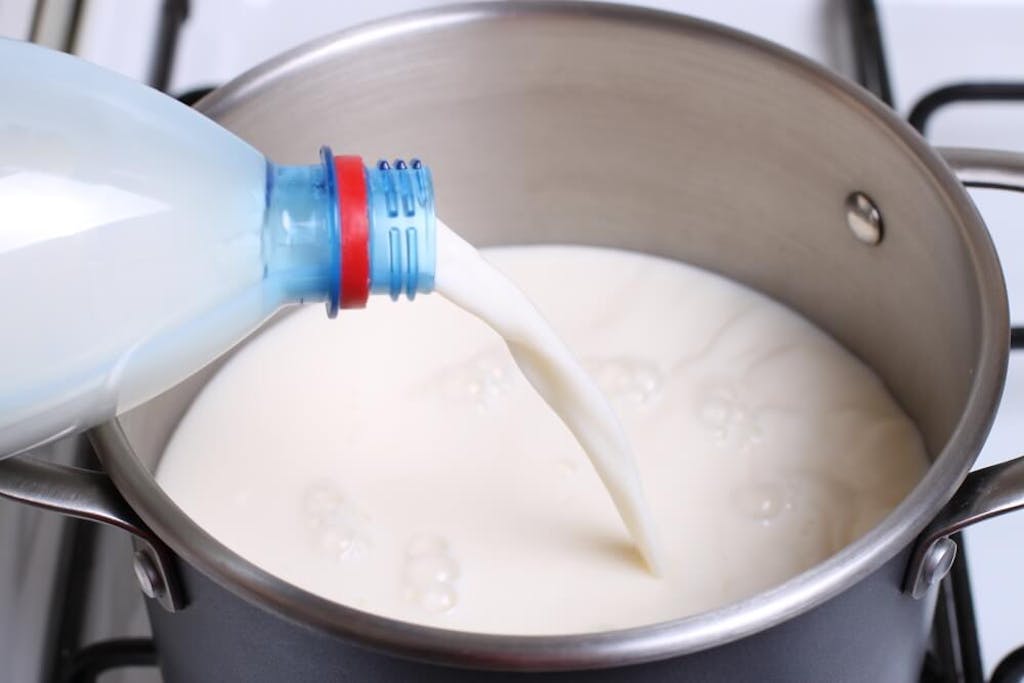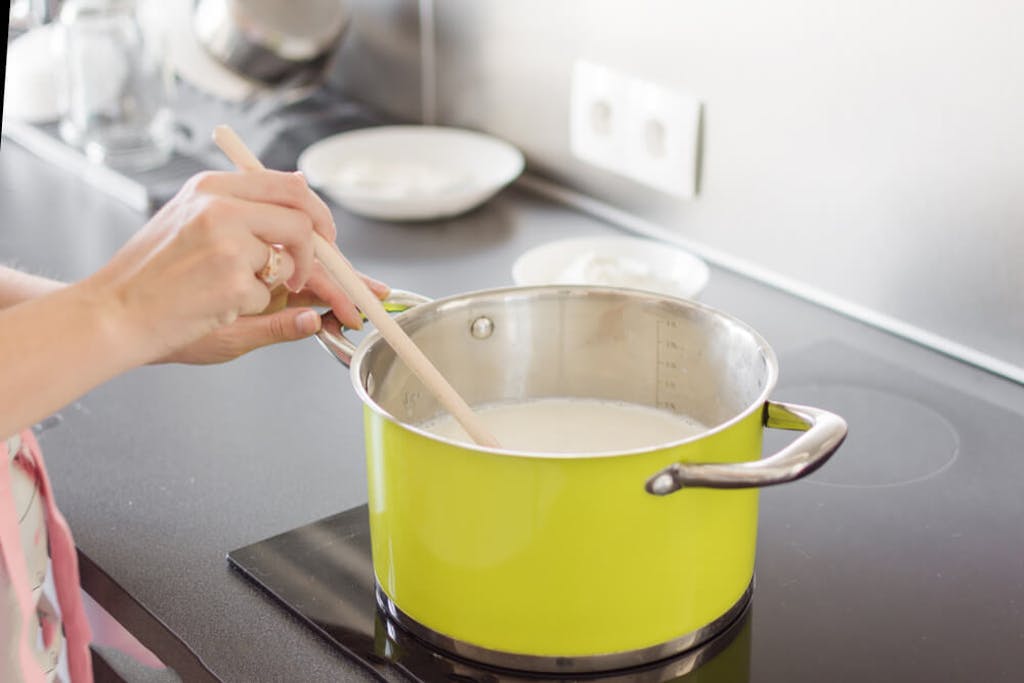REC articles are not the view or opinion of Alpha Extract Administrators
Cannamilk Recipe
Moooove over cannabutter and cannaoil
Yield: 2-4 cups of cannabis milk
Prep time: 1 hour (to grind and decarboxylate cannabis)
Total time: Around 1 hour and 45 minutes, including decarboxylation
How to make cannamilk
Making cannamilk is quite easy, and you probably have everything you need around the house already.
Ingredients
- Around 7 grams of decarboxylated cannabis
- 2-4 cups whole milk (use less if you want a more concentrated batch)
- Cheesecloth

Instructions
- Decarboxylate around 7 grams of cannabis (a quarter ounce)
- Put the milk in a saucepan, add the cannabis and simmer at a low heat for around 30-45 minutes, stirring frequently. Make sure not to let the milk come to a boil or become scorched. The milk should also thicken some as it simmers, and also will acquire a rather yellow-green hue.
- Take the milk off the heat, strain through a cheesecloth into the container of your choosing.
That’s it! It’s really that simple!
And you don’t technically need to stick with cow’s milk. You can easily infuse almond milk, goat’s milk, sheep’s milk, soy milk, rice milk, oat milk — pretty much any milk. The recipes all entail basically the same steps — decarboxylate some cannabis, simmer on low heat in a saucepan with milk, strain and let cool. But keep in mind that the higher the fat content in the milk, the better it will be at absorbing the THC.
What about infused almond or coconut milk?
Recipes abound for cannabis almond or coconut milk, which isn’t surprising considering the popularity of both.
While you can find some variations in the recipes, typically the same principles of making cannabis milk apply. Decarboxylate some cannabis (typically around 2 grams per cup of liquid, though this depends on how potent you want it to be) and simmer it in a pan with the coconut or almond milk on low heat for around an hour. Make sure to stir frequently so the milk doesn’t scorch, and then remove from the heat and strain through cheesecloth after it has cooled

What can you make with cannamilk?
Cannamilk can be used in pretty much any recipe that calls for milk, either as one of the main ingredients or as an additive. It can be added to coffee to make an A-OK cafe au lait, for milk-based smoothies that will make it very hard to leave the beach, for incredible cannabis ice cream, or just added into your morning breakfast cereal with some “regular” milk. You can also just take a swig of cannamilk straight out of the jug.
The options are truly endless.
